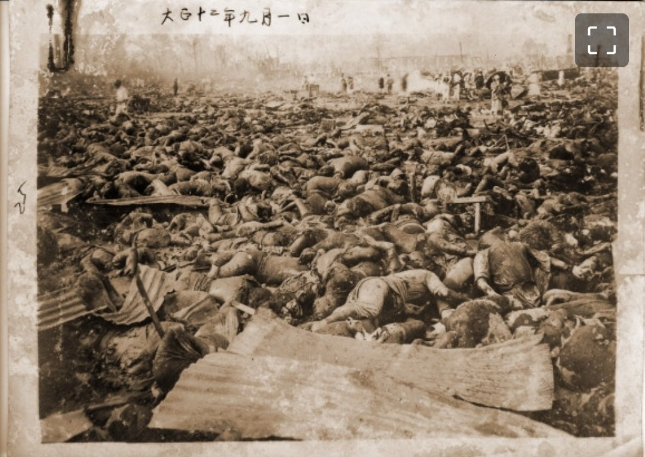The Kantō Massacre is a tragic event that occurred in the aftermath of the Great Kantō Earthquake on September 1, 1923, in Japan. This massacre primarily targeted Korean residents in Japan and was fueled by false rumors and xenophobia amidst the chaos following the earthquake.

A photograph presumed to show Korean victims during the Great Kantō Earthquake in Japan has been released. The photo depicts decomposed bodies piled on top of each other. At the top of the photo, the date "September 1, Taishō 12" is written. The Taishō era refers to the reign of Emperor Yoshihito of Japan, and September 1, Taishō 12 corresponds to September 1, 1923, the day the Great Kantō Earthquake occurred.
Source: Jeong Seong-gil, Honorary Director of the Keimyung University Dongsan Medical Center Museum
Background and Events
- The Great Kantō Earthquake: On September 1, 1923, the Great Kantō Earthquake struck the Kantō region, including Tokyo and Yokohama, causing widespread destruction and social chaos.
- Rumors and Xenophobia: In the aftermath of the earthquake, false rumors spread that Koreans were poisoning wells and committing acts of arson and sabotage. This misinformation, combined with existing anti-Korean sentiment, led to widespread violence.
- The Massacre: Over the course of several weeks, thousands of Koreans were killed by Japanese military, police, and vigilante groups. Estimates suggest that at least 6,000 people were murdered, though some sources claim the number could be higher.
Government Response and Denial
- Initial Reactions: The Japanese government initially attempted to suppress information about the massacre and downplayed its scale. Official records of the event are sparse, and the government often attributes the violence to vigilante actions rather than state-sanctioned activities.
- Denial and Revisionism: Some Japanese politicians and right-wing groups continue to deny or minimize the massacre. This denial has been criticized by historians and human rights activists who emphasize the need for acknowledgment and reconciliation.
Commemoration and Current Issues
- Anniversaries: September 1st is marked by various civic groups as a day of remembrance for the victims of the Kantō Massacre. Commemorative events and demonstrations are held annually in Tokyo to honor the victims and raise awareness.
- Calls for Recognition: Families of the victims and advocacy groups continue to call for official recognition and an apology from the Japanese government. They argue that acknowledging the massacre is essential for healing and reconciliation.
- Cultural Impact: The massacre has been depicted in literature, films, and art, highlighting the need for historical acknowledgment and the ongoing struggle against discrimination.
The Kantō Massacre remains a sensitive and unresolved issue in Japan's history, with ongoing debates about historical responsibility and the need for acknowledgment and reconciliation between Japan and Korea. Recognizing this tragic event is crucial for fostering understanding and healing between the two nations.